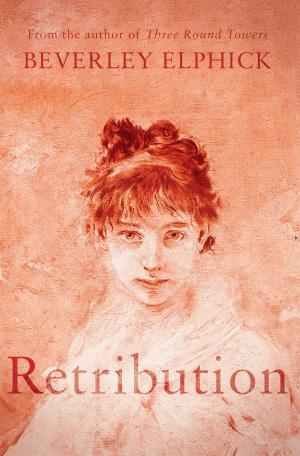| Author: | William Fell-Holden | ISBN: | 9781784628161 |
| Publisher: | Troubador Publishing Ltd | Publication: | March 28, 2015 |
| Imprint: | Matador | Language: | English |
| Author: | William Fell-Holden |
| ISBN: | 9781784628161 |
| Publisher: | Troubador Publishing Ltd |
| Publication: | March 28, 2015 |
| Imprint: | Matador |
| Language: | English |
At age two, one December day in 1943, Eric is handed over to a stranger, the Reverend Brightman. The Reverend is here to help Eric’s unmarried mother, who cannot keep Eric as she has to work in the cotton mills. Across war-torn Britain, a bawling and exhausted Eric is taken on a long train journey, finding relief only in snatches of sleep. The traumatised child is handed over to another stranger and delivered within the grim walls of Aqualate Hall, in the countryside of Shropshire. It is the first in a long line of Barnardo Homes he must call home. “You’re a bastard!” snaps Matron, slapping him. Eric does not cry. He now knows that he must always hide his feelings if he is to retain his humanity. Eric’s progress is recorded by his caregivers and indicates that he is labelled early on as ‘backward’ and ‘spiteful’. Yet Eric has his own story to tell. That of a life growing up in the rich countryside, full of childhood escapades, hobbies and the joys of nature; and of the imagination that shapes a child’s developing sense of the world and his place within it. But it is the adults and senior boys who leave their physical and psychological marks: Matron, the bitter care-giver; the psychotic, frothing-at-the-mouth Master, Mr Clarke; the sexually aware, primitive Smitt; and the taunting bully-boy in school uniform. It is only when he meets the enlightened Master, Mr Savidge, that Eric feels freer to explore his relationships with others. This harrowing autobiography, set in the 1940s and 1950s, reveals the inner turmoil of a child in care, from early years to adolescence and emerging into adulthood. It is also a story of triumph, as a boy finds a way out of the fog of confusion around him, since that first wrench from his mother’s love. Backed up by recorded orphanage reports that demarcate Eric’s troubled journey, Don’t Come Crying Home seeks to give a rounder view of a struggling child, revealing his physical, sexual, and spiritual growth, all told with passion.
At age two, one December day in 1943, Eric is handed over to a stranger, the Reverend Brightman. The Reverend is here to help Eric’s unmarried mother, who cannot keep Eric as she has to work in the cotton mills. Across war-torn Britain, a bawling and exhausted Eric is taken on a long train journey, finding relief only in snatches of sleep. The traumatised child is handed over to another stranger and delivered within the grim walls of Aqualate Hall, in the countryside of Shropshire. It is the first in a long line of Barnardo Homes he must call home. “You’re a bastard!” snaps Matron, slapping him. Eric does not cry. He now knows that he must always hide his feelings if he is to retain his humanity. Eric’s progress is recorded by his caregivers and indicates that he is labelled early on as ‘backward’ and ‘spiteful’. Yet Eric has his own story to tell. That of a life growing up in the rich countryside, full of childhood escapades, hobbies and the joys of nature; and of the imagination that shapes a child’s developing sense of the world and his place within it. But it is the adults and senior boys who leave their physical and psychological marks: Matron, the bitter care-giver; the psychotic, frothing-at-the-mouth Master, Mr Clarke; the sexually aware, primitive Smitt; and the taunting bully-boy in school uniform. It is only when he meets the enlightened Master, Mr Savidge, that Eric feels freer to explore his relationships with others. This harrowing autobiography, set in the 1940s and 1950s, reveals the inner turmoil of a child in care, from early years to adolescence and emerging into adulthood. It is also a story of triumph, as a boy finds a way out of the fog of confusion around him, since that first wrench from his mother’s love. Backed up by recorded orphanage reports that demarcate Eric’s troubled journey, Don’t Come Crying Home seeks to give a rounder view of a struggling child, revealing his physical, sexual, and spiritual growth, all told with passion.















